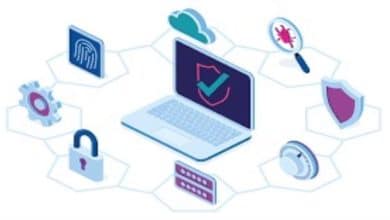Building Conversational AI: An Up-to-Date Manual to Making a Chatbot

With technological advancements, conversational simulated intelligence has become progressively significant for organizations expecting to improve client collaborations and functional proficiency. Among the different utilizations of conversational simulated intelligence, a chatbot is an incredible asset for engaging users. This article will discuss how to make a chatbot, covering fundamental perspectives and giving bits of knowledge about the most recent practices.
Please find more details in the Topflight research: https://topflightapps.com/ideas/how-to-build-a-chatbot/
Understanding Chatbot Landscape
Before discussing the method involved in making a chatbot, understanding the ongoing scene of conversational AI is urgent. The evolution of chatbots from basic rule-based systems to sophisticated, context-aware conversational agents has been driven by the demand for intelligent and interactive solutions. Organizations across businesses are perceiving the capability of chatbots to smooth out processes, offer nonstop client service, and even drive deals.
How to Make a Chatbot: Key Consideration
Below are custom chatbot development methodologies to consider in your bid for chat bot development plan:
1. Define the Purpose
Creating a chatbot starts with a reasonable meaning of its motivation. Distinguish the issues the chatbot expects to address — whether it’s giving client service, helping with item requests, or working with exchanges. This clarity sets the foundation for the whole improvement process.
2. Understand Your Audience
Understanding your interest group is central to making a compelling chatbot. Communication styles, tones, and levels of formality may vary by demographic. Fitting your chatbot’s character to line up with the inclinations of your crowd contributes fundamentally to its acknowledgment and achievement.
3. Select the Right Platforms
It is essential to effectively reach your audience to select the appropriate platforms for deploying your chatbot. Whether coordinating with informing applications, sites, or web-based entertainment stages, understanding where your clients are most dynamic guarantees the most significant commitment. Your chatbot’s impact can be increased by selecting the right platforms in advance.
How to Create a Chatbot?
1. Chatbot Advancement Philosophy
A decisive improvement system will be the foundation of any successful chatbot project. Custom chatbot improvement strategies include a systematic approach to arranging, planning, and executing the chatbot. The strategy should be tailored to the specific business goals of your company, ensuring a seamless integration of your chatbot with your daily tasks.
2. Chatbot Building Blocks
Innovation Stack
The right innovation stack will help you improve your chatbot. All of these factors are important. The technology stack should reflect your project requirements, including future scaling requirements.
Plan for Conversational Stream
The conversational flow is similar to creating a chatbot guide. Make a decision tree to help guide your chatbot and anticipate user questions and journeys. This ensures that a logical and coherent conversation will enhance the user’s experience.
Regular Language Handling (NLP)
NLP can help your chatbot understand and respond humanly. NLP algorithms can understand and process user inputs, making the conversation natural. Using a coordinated feeling analysis to determine client emotions allows the chatbot to respond sympathetically.
3. Experience and UI
For a chatbot to be successful, the UI must have a consistent feel. Chatbots should give clear instructions when needed and allow users to navigate easily through the conversation. Integrating visual and audio components, such as pictures or recordings, can enhance the client experience.
4. Backend Frameworks are compatible with Mix
Reconciliation with data and frameworks on the backend is essential for a chatbot to be truly useful. The reconciliation allows the chatbots to retrieve continuous data and perform tasks like managing exchanges, recovering customer information, or giving customized responses based on the latest information.
5. Test and Arrangement
Test your chatbot thoroughly before releasing it to the public to ensure its viability and usefulness. Use robust error-handling mechanisms to identify issues and simulate different user scenarios. A small group of beta testers can be used to make future improvements.
6. Nonstop Monitoring and Streamlining
Monitor essential performance indicators such as user satisfaction, response time, and engagement. Update the information database of your chatbot regularly to ensure it is current and relevant. Continue to improve the chatbot and artificial intelligence in response to client feedback and emerging patterns.
Conclusion
Planning to make a chatbot can be a complicated process that involves careful preparation, consideration of customer needs, and the latest technological advances. You can build a chatbot that meets and exceeds customer expectations by following a customized chatbot development strategy, understanding your audience, and integrating critical features in the progression cycle. For success, keep the conversation dynamic, refine your chatbot constantly, and stay open to new developments in Conversational Artificial Intelligence.


